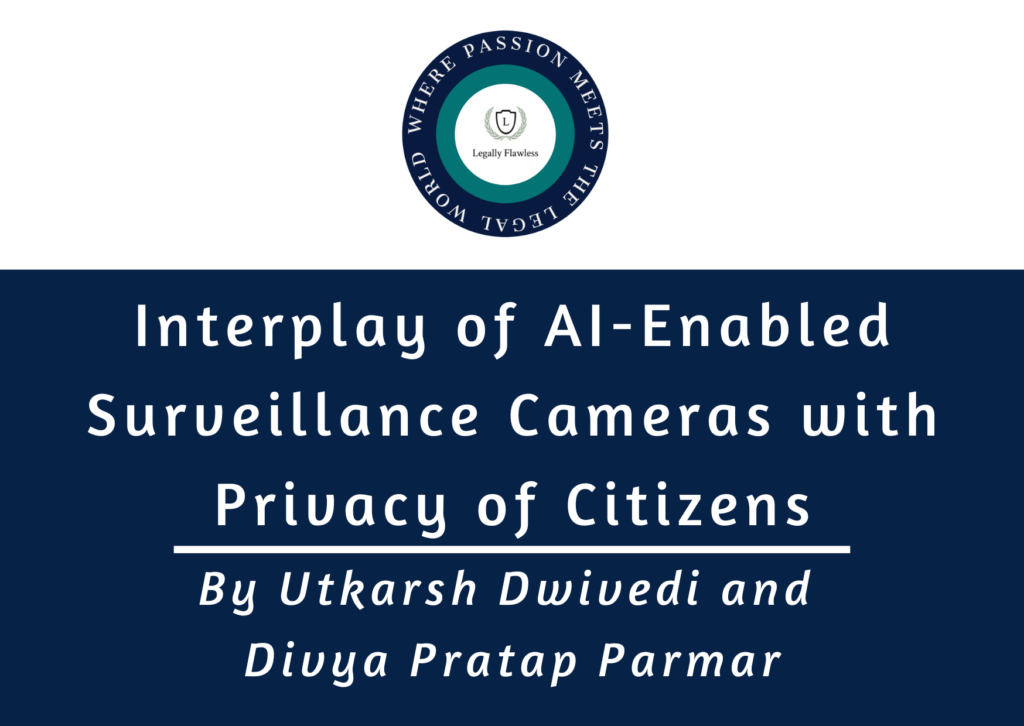
Table of Contents
Background
Recently, Kerela Government green-flagged the installation of AI-enabled Traffic Cameras on the roads to ensure the e-regulation of traffic rules. AI-enabled cameras are developed for various applications; these cameras can be helpful in traffic monitoring as they can capture and share data with control rooms and take requisite actions in real-time. Standard cameras can significantly reduce the workload and time consumed when integrated with A.I. technology. Regarding traffic monitoring, AI-enabled cameras can detect high-speeding vehicles, traffic rules violations, and instant retrieving and verifying vehicle registration data through registration plates.
These cameras have a very high resolution which can aid in focusing on details, even recognizing facial data of a person driving the car if set in an ideal location. Currently, most states use high-resolution cameras to capture the road in normal and dim light. Based on analysis of the video, challans or other actions are taken. However, the extent of traditional surveillance cameras should be respected, considering India’s surveillance laws and privacy-related rules. Under Section 354C of the Indian Penal Code, while any woman is engaged in legal activities, observing them without their awareness is an offense. Moreover, under Section 67 of the Information Technology Act, recording visuals of private areas of any person is illegal.
Functions of an A.I. camera
An A.I. camera, also known as an intelligent camera, is a type of camera that uses artificial intelligence to analyze the images and videos captured by it. These cameras are equipped with advanced software and hardware components, such as processors, sensors, and machine learning algorithms, that enable them to detect, recognize, and track objects and people in real-time.
A.I. cameras are used in various applications such as traffic monitoring, surveillance, security, and industrial automation. They can detect and analyze multiple events, such as traffic violations, security breaches, abnormal behavior, and product defects.
Using A.I. cameras in traffic monitoring aims to improve road safety, reduce traffic violations, and make traffic law enforcement more efficient and effective. The A.I. cameras being used for traffic monitoring in Kerala have several advanced features in addition to automatic number plate recognition and video analytics, such as:
- Facial recognition: The cameras can also recognize faces and match them with a database of wanted criminals or missing persons.
- Speed detection: These cameras can detect the speed of a moving vehicle and can issue tickets for over-speeding.
- Red light violation detection: The cameras can detect if a vehicle jumps a red light and can issue a ticket accordingly.
- Lane departure detection: The cameras can detect if a vehicle drifts out of its lane and issue a warning or ticket per traffic rules.
- Helmet detection: The cameras can also detect whether a two-wheeler rider is wearing a helmet.
Copyright on AI Generated Content: Understanding the Legal Landscape and Need for Global Consensus
How privacy is a concern in this regard
Using traditional high-resolution cameras on the road for traffic monitoring might infringe on your privacy as, at their current capability, these cameras record the whole activity on the road where they are installed. The data is stored and accessible for traffic control and monitoring in the traffic control rooms. Also, the security of a cable-connected camera is fundamental, and therefore, the risk of data theft is high. It should be highlighted here that monitoring the traffic rule violators is not a concern as they are engaged in illegal acts or are suspects. However, the vehicles running as per the rules are also recorded by these cameras; consequently, the Right to privacy of the citizens driving is affected. The situation can be understood simply by considering a person driving his car. Cars are private properties, and while the car’s exterior might not be a personal space, what’s going on inside the car falls under the ambit of sensitive, confidential information of a person. Also, there is the right to be left alone, while in the present scenario person on the road will be under the pressure of being observed. This data of people following every traffic rule is being unnecessarily recorded, which raises serious privacy concerns.
As in the KS Puttaswami case, it was held that sensitive personal data of a person could only be collected or observed with the consent of a person or only when it is a necessity in the public interest. In the present matrix, with the advent of A.I. enabled cameras that can capture only requisite information, the condition of monitoring all the vehicles or all the content being recorded from the road waives off. The Government now has an alternative measure where citizens’ privacy can be protected while achieving the desired objective. Still, there seems to be no concern about the matter even after the Kerela Government has already made it a fancy and futuristic agenda that various News Channels and other media platforms are blindly reposting.
The cameras installed by Kerela are not indeed A.I. Cameras.
Various experts state that the cameras installed by the Kerela government are not the cameras, technically referred to as A.I. cameras. The yet-known features of the cameras installed do not include selective data capturing. Still, they will capture the video clips like traditional traffic cameras, store them, analyze them, and send the challans and information to the people and police control rooms in real-time.
The only function of these cameras, which can slightly intersect with the application of A.I. Cameras, is that they can analyze the video in real-time. So, the term A.I. Enabled camera is acting as a misrepresentation where people might think it protects the identity of law-abiding citizens by capturing only relevant data. The government has yet to release a public statement explaining the functioning of the cameras, and therefore, the functions of the cameras cannot yet be concluded. And the Public, on the other hand, seems to be more interested in their right to information as the government contract with the manufacturing company is already controversial news about the contract’s price. Considering this, the inference is that either privacy is less important for the citizens when compared to the utilization of government funds, or the citizens are unaware of their privacy being violated.
The Renowned DABUS Case: Revisiting To Seek Imperative Legal Clarity
Conclusion
While India recognizes the Right to Privacy as a Fundamental Right Under Article 21 of the Constitution, the privacy laws in India are flexible. The Data Protection Bill is struggling to be passed, various traditionally allowed practices in the name of public interest are still being used, and the Government needs to take measures to strengthen it. Actual A.I. Cameras can ensure minimum interference with citizens’ privacy through selective capture and event-triggering technology. Only when some traffic rule is violated will the camera start capturing and capturing only the relevant parts to prove the offense.
People should not blindly rely on the terms that government uses for the technologies. Privacy awareness is the most critical aspect of personal security and one’s life which through the present scenarios, can be seen as something about which people are unaware.
This article is authored by Utkarsh Dwivedi and Divya Pratap Parmar, students at Institute of Law Nirma University, Ahmedabad


